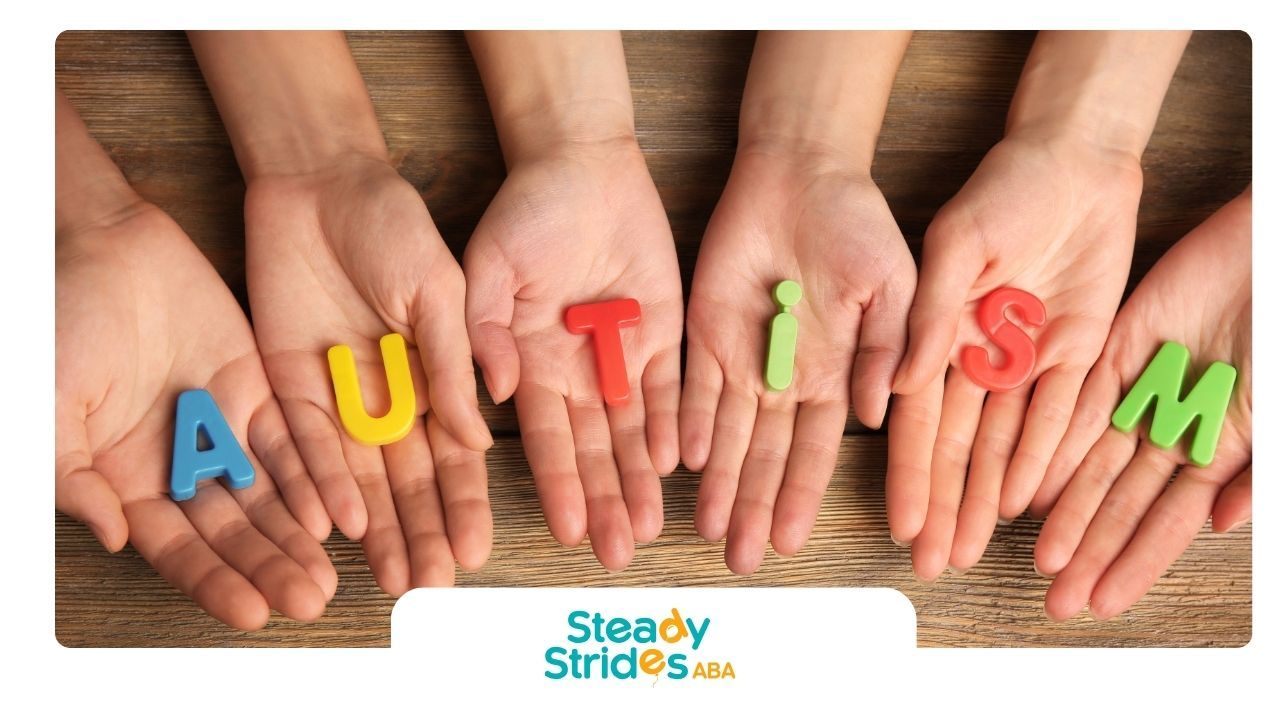Autism Shutdown vs Meltdown
Figuring out how autistic shutdowns and meltdowns differ is a big deal for caregivers, teachers, and therapists working with people on the autism spectrum. While both are about dealing with overwhelming situations, they show up in pretty different ways and have distinct purposes.
Understanding Shutdowns
Imagine this: someone on the autism spectrum who’s just had it with everything around them. That's when an autistic shutdown can hit. It's like hitting pause on everything. They might stop talking, go quiet, or just pull back from the world. This is their way of saying, "I need a break," and trying to chill out after dealing with way too much. It's like their brain putting up a "do not disturb" sign.
Getting back to normal after a shutdown isn’t the same for everyone. It shakes out depending on stuff like how intense things got, what kicked off the shutdown, and whether the stress is still poking at them. During this recovery phase, they might not say much, or they could be completely silent, just hanging out in their own headspace or somewhere safe. Knowing these signs is key so folks around them can lend a hand the right way.
Exploring Meltdowns
Meltdowns are like emotional storms kicking up when everything gets too loud or too much. It’s like the volume’s cranked to max and they just can't take it anymore. This might look like shouting, crying, or other stressed-out actions. It's all very external.
Lots of stuff can spark a meltdown. Maybe it's a sudden switch in plans, freakishly loud noises, or tricky social stuff. When a meltdown hits, folks around might struggle to calm things down. Spotting what sets off these meltdowns and knowing how they’re not like shutdowns helps in piecing together some awesome coping hacks to keep these storms at bay.
Seeing both shutdowns and meltdowns side by side shines a light on why it’s smart to come up with support tactics that fit the person dealing with them. Creating a world that gets these differences means families, teachers, and pros can step up their game, helping people with autism handle life’s twists and turns.
For more deep dives into autistic shutdowns and ways to handle them, check out our pieces on autistic shutdown symptoms, autistic shutdown in adults, and autistic shutdown strategies. Getting a grasp on the uniqueness of these experiences gives everyone a boost in supporting folks in the autism community the right way.
Characteristics of Meltdowns
Getting the scoop on what makes meltdowns tick can really help when it comes to spotting and dealing with these moments in folks with autism spectrum disorder (ASD). Meltdowns can pop up due to lots of things going on around a person and show through various tell-tale signs.
External Signs
When an autistic meltdown hits, you’re likely to notice lightning-like responses instead of retreating behaviors. Here's what to watch for:
- Screaming and shouting: Voices can hit the roof as individuals let loose their piled-up emotions.
- Crying: Swamped feelings often spill into tears.
- Aggressive behavior: You might see actions like hitting or flinging stuff around.
Besides, there are often signals waving red flags before the meltdown storm. Look out for:
- Actions like rocking, pacing around, or flicking fingers. These are like a neon sign of rising anxiety levels.
| Red Flags | What's Happening? |
|---|---|
| Rocking | Stimming |
| Pacing | Stimming |
| Finger Flicking | Stimming |
Environmental Triggers
Meltdowns often get set off by things getting a bit too much for the senses. Autistic kids and adults sometimes get really sensitive to stimulus, making them feel swamped. Usual suspects include:
- Loud sounds: Sudden or droning noises can set nerves jingling.
- Bright lights: Those sharp lights or sudden flashes can be like a stab in the eyes.
- Strong smells: Strong whiffs from perfumes or foods can bring on the yucks.
Catching on and dealing with these things can help big time in keeping meltdowns at bay. For the 4-1-1 on signs of stress and what sets off shutdowns, swing by our pieces on autistic shutdown symptoms and autistic shutdown triggers. Being clued into the whole autistic shutdown vs meltdown helps families, teachers, and therapists give a hand when needed the most.
Characteristics of Shutdowns
Getting the lowdown on autistic shutdowns helps us better support folks who go through them. These aren't like meltdowns, which are kind of in-your-face; shutdowns are more like an internal escape, with different ways to cope.
Internal Responses
When a shutdown hits, a person might feel super stressed, go quiet, or even seem spaced out. This tends to happen when sensory stuff, emotions, or too much info pile up, making them shut down like a flicking switch on a circuit breaker for a bit.
Here’s what might be going on inside:
- Situational Mutism: They might stop talking altogether, unable to get their words out.
- Numbness: They could feel like everything’s on pause—emotionally and physically—it's a way of dealing with the mess of stress.
- Retreating: Moving somewhere quieter or going still as a statue can help them shut out the chaos around them.
These reactions are signals: when you see ‘em, it’s time for some peace, so they can bounce back.
Coping Mechanisms
Shutdowns aren’t just shutdowns; they're like a body’s way of yelling that it's had enough. The person might not show it with actions, but inside it’s like a little warning bell, needing some tried-and-true techniques to get through it.
Consider these methods:
| Coping Mechanism | Description |
|---|---|
| Seeking a Quiet Space | Finding a spot away from chaos can help turn down the sensory overload. |
| Deep Pressure | A tight hug or draping a weighted blanket over their shoulders can feel like a security blanket. |
| Time Alone | Giving them some solitude can work wonders—it’s their chance to breathe easy and regroup. |
| Sensory Tools | Fidget gadgets or squishy toys might help zap focus toward something comforting. |
Knowing these tactics is key for anyone who's supporting them through this—whether it's parents, relatives, or the folks at school. When you set up a space where these tools can do their thing, you’re giving them a shot at handling shutdowns with a little more peace and quiet.
Key Differences
Getting a handle on what separates autistic shutdowns from meltdowns can really make a difference for families, teachers, and professionals trying to help out.
Behavior Contrasts
The big split between a meltdown and a shutdown is in how they play out. Meltdowns are like fireworks—loud and out there, with shouting, crying, or even some not-so-great behavior. This usually happens when someone with autism gets slammed with too much noise, light, or other sensory stuff. Shutdowns, on the flip side, are kinda the opposite. Folks go quiet, pull back into their shell, and might stop talking altogether, opting for a quiet corner or safe spot.
To break it down:
| Behavior Aspect | Meltdown | Shutdown |
|---|---|---|
| Nature | Outward | Inward |
| Common Reactions | Screaming, crying, lashing out | Quiet, non-verbal |
| Trigger | Overwhelming senses | Stressful situations |
Recovery Process
Bouncing back from shutdowns and meltdowns isn’t the same ball game. After a meltdown, it might take some time to shake it off—there's no set timer on this. A little comfort and gentle words help a lot here. Shutdowns, though, are like hitting the pause button to ease off some stress, and coming back from one can take its sweet time, depending on how tough things are around the person.
When dealing with a shutdown, folks might just need some alone time and to be left in peace to recharge. This is different for everyone, so being aware and patient helps a ton. Knowing the ropes on what each situation calls for helps caregivers know how best to lend a helping hand.
Some quick notes:
| Recovery Aspect | After Meltdown | After Shutdown |
|---|---|---|
| Duration | No set time | No set time; often needs more time |
| Support Needed | Hugs and gentle words | Space, peace |
| Communication | Show you care | Quiet time, personal space |
Recognizing these differences means families and pros can fine-tune their support, making sure they’re giving the best help for those dealing with autistic shutdowns and meltdowns.
Support Strategies
Helping folks through autistic shutdowns and meltdowns means we need to be understanding, chill, and use solid strategies. Here's how we can lend a hand and make things easier.
Providing Assistance
When someone is having a shutdown or meltdown, it's key to help without passing judgment. Being clear and structured in communication is a big help. Some might prefer texting, others might like to talk face-to-face. Assume nothing—ask what's best for them.
Here are some ways to support someone during these moments:
- Spot and Dial Down Stressors: Know what sets off a shutdown or meltdown. If we can pinpoint triggers, we can chat about fixing or reducing them. It could mean fewer episodes in the future.
- Chill the Atmosphere: Dim those bright lights and hush any racket to make life easier during tense times. Soundproof rooms or having calming tools like worry books can be lifesavers.
- Give Time and Space: During a shutdown, a person might go silent and need to be alone. Letting them have their moment to recharge goes a long way.
| Support Strategy | Description |
|---|---|
| Spot Stressors | Figure out what ramps up stress for them. |
| Mute Sensory Overload | Keep it quiet and dim for a peaceful setting. |
| Time to Chill | Let them have space to relax without rushing them. |
Creating Supportive Environments
Figuring out the whys and hows of shutdowns and meltdowns can help craft a more comfy setting. Here's how to make environments better:
- Team Up with Schools: Work with educators to tweak things for autistic students. This could mean changing classroom layouts, schedules or teaching tactics to match their needs.
- Set Up Plans: Chat when things are calm to set up a game plan for meltdowns or shutdowns. Having a ready strategy can make handling these moments a breeze.
- Keep It Easy: During a meltdown or shutdown, using the gentlest methods is best. Try not to bark orders or throw too much info their way.
Support means getting to know what each person needs, and always using these strategies to keep things smooth and supportive.
Impact on Individuals
Grasping the emotional ups and downs and lasting effects of autistic shutdowns and meltdowns is crucial for caregivers, educators, and any pros lending a hand to folks on the autism spectrum. These events can really shape a person’s emotional state and future growth.
Emotional Toll
Going through meltdowns can be a pretty rough ride for those with autism, largely because they're often built up from all sorts of pressures—sensory overload and social demands topping the list. Long exposures can crank up the anxiety, stir up depression, and feed feelings of helplessness. It’s vital to understand that during a meltdown, the person involved isn’t steering the ship, which can leave them feeling vexed and vulnerable after.
Shutdowns, on the flip side, dish out their own set of emotional hurdles. Someone in a shutdown might feel like they’re unplugged or numb, swamped by too much stimulus. The lack of communication during such times often leads to isolation and frustration. Support from family and friends is key, as those facing shutdowns might need time to sift through their feelings.
| Experience Type | Emotional Reactions |
|---|---|
| Meltdown | Anxiety, anger, frustration, lost ground |
| Shutdown | Numbing out, disconnection, frustration, feeling alone |
For parents and caregivers, being in tune with these emotional signals is a big deal. Building a supportive atmosphere can ease some of the emotional weight tied to these events. Steps to help might involve learning about autistic shutdown symptoms and keeping things mellow when the storms hit.
Long-Term Effects
The ripple effects of constant meltdowns or shutdowns can stretch across many parts of an individual's life. Over time, the emotional drain may boost anxiety or depression levels, messing with social or school life. Misunderstandings or bad press around these events can ding self-esteem too.
Folks who face shutdowns often could pick up adaptive habits that skew how they vibe with peers and family. While shutdowns shield them from drowning in stimuli, they can also trip up the crafting of better ways to handle stress later on.
Getting through both meltdowns and shutdowns can vary a lot. Factors like how overwhelmed the person feels, why it happened, and how close they are to what set it off play into how they bounce back. Working on coping skills, like spotting autistic shutdown triggers and building custom-made autistic shutdown strategies, can soften the blow of these events in due time.
Tuning into the emotional burden and long-term shake-ups of autistic shutdowns and meltdowns is key for giving real support. By sparking open talks and crafting a welcoming space, families, teachers, and professionals can better guide those with autism through these tough patches.













